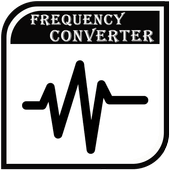Satellite Frequency Converters

Frequency converters are key part of satellite ground stations or test facilities to secure reliable communication link between ground and space segments. Standard up- and downconverters are typically used at telecommunication, broadcast or telemetry / telecommand ground stations to transform the baseband signal into the upper region of the frequency spectrum and vice versa. Test Loop Translators (TLT) are intended to check system performance of uplink / downlink ground station without using live satellite link. Excellent RF to RF signal conversion and precisely adjustable attenuation can simulate signal transmission path for testing purposes.
The role of satellite converter.
Satellite converter (often called LNB - Low Noise Block) is the device used for amplification and transition of signals from the ranges 10.7-11.7 and 11.7-12.75 GHz into the band of first intermediate satellite frequency (IF - 950-2150 MHz).
Their basic parameters are: amplification, noise figure, power (current) consumption and ability to work with MPEG2 receiver.
Typical parameters of a full-band converter are: amplification - 55dB, noise figure - 0.3-0.7dB, current consumption - 100mA. In the case of twin, dual or quatro converters, the current consumption can reach 400mA. Satellite signals Specific feature of satellite systems is use of different polarizations and bands. Distribution of programs is realized on C and Ku bands, however in the second case two sub-ranges are used.
- C band: 3.7- 4.2 GHz (bandwidth: 500 MHz; heterodyne frequency: 5.15 GHz),
- Ku band: 10.7-12.75 GHz (bandwidth: 2050 MHz; heterodyne frequencies: 10.0; 9.60; 10.60; 10.75 GHz).
Types of converters.
Among all particular versions of converters there are many variants that only differ in generator frequency, input and output band, and the way of selecting received polarization. Nowadays, the most popular variants are these described below. Due to presence on the market, there are also mentioned converters with DiSEqC control. We omitted converters developed for receiving circle-type polarization signals (dextrorotary and levorotatory), because only sparse satellites use such polarization nowadays.
Full band
- the most popular converter these days, it allows to receive programs transmitted with vertical and horizontal polarization (selection is realized by applying supply voltage 18V or 14V), and in the range 10.7-11.7 and 11.7-12.75 GHz (selection is realized by sending or not 22 kHz signal with 0.6V amplitude). Frequency of the local generator equals to 9.75 GHz for the range 10.7-11.7 GHz, and 10.6 GHz for the range 11.7-12.75 GHz. Sometimes we can find variants with 10.7 GHz frequency.
Double (twin)
is in fact two independent converters in one housing, which allows to receive two different satellite programs (by two receivers). They are all made in full band variant.
Quad
is quatro converter (see below) with built in 4/4 multiswitch. Such a converter allows to connect up to four receivers that can work fully independently.
Dual
is converter which has signal output with vertical polarization and signal output with horizontal polarization, usually within the range of 10.7 to 11.7 GHz. Both signals are available in continuous mode as opposite to full band or twin converter. These converters are currently not used - they have been superseded by quatro converters.
Quatro
- it is converter with four independent outputs: range of 10.7-11.7 GHz with vertical polarization, range of 10.7-11.7 GHz with horizontal polarization, range of 11.7-12.7GHz with vertical polarization and range of 11.7-12.75 GHz with horizontal polarization.
Monoblock
- nowadays it is typical solution supporting reception of programs from two satellites. This is two converters with DiSEqC switch, put on single printed-circuit board and closed in common housing. Selection of the converter is performed by sending Tone Burst or DiSEqC signal. These converters are suitable for work with dishes of 80 to 90 cm diameter.
Converters in community antenna installations (SMATV systems).
To receive any available program, from any band and polarization, it requires that all signals are accessible all the time. This requirement can't be fulfilled by typical converters called universal single. For simultaneous reception of both polarizations (vertical and horizontal, or dextrorotary and levorotatory) there have to be used quatro or dual converters, or polarization splitter cooperating with two independent converters.
Instead of dual converters, twin converters can be used, being in fact two independent converters in common housing, however, it has to be checked whether they are properly controlled by the headend station.
Quatro converters are used in installations built with the use of multiswitches and headend stations of community and cable TV systems, where they cooperate with sets of satellite receivers. Besides that, they are also used in installations distributing the first intermediate satellite frequency.
Converters and multiswitches.
Using converters in multiswitch installations we should realize that many multiswitches have at their all inputs the same voltage from the 14 - 18V range (it depends on individual solution). That makes it impossible to use standard full band converters (inability of switching band and polarization). There could be only available low band (10.7-11.7 GHz) and one polarization. That's why we have to use quatro converters in multiswitch installations.